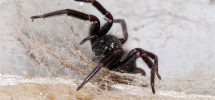Aquatic plants are natural and useful materials present in an aquatic environment. some microscopic plants like the algae form a great food chain, whereas larger algae and plants provide environments for fish and other food organisms, which plants uses photosynthesis to produce oxygen during the day with the aid of sunlight. Therefore, an excessive growth of these plants can be more harmful to organisms residing in the environment which is more reason why many ponds, lakes, and drainage ditches are deep with the nutrient that provides a favorable condition for aquatic weed growth. Aquatic weeds or their seeds are moves into a pond by wind, birds, fish, and fishermen, etc. These weeds overwhelm a pond if the water conditions are favorable. Which means that nutrients are entering the pond from runoff or stream inflow.

Problems Caused By Aquatic Weeds Includes
- Aquatic weeds limit recreational activities such as swimming, boating, and fishing.
- It provides stagnant water which as a result produces mosquitoes in the area.
- Aquatic weeds prevent the free flow of water in drainage ditches, irrigation canals which cause water to back up.
Some Controls And Prevention To Help Prevent Weed Infestations Includes
- Avoid the fertilizing your pond to prevent too many nutrients. Ordinarily, most midwestern waters are sufficient with plankton and other food organisms to support large fish.
- Aquatic weeds breed on nutrients available in the pond, therefore, do not fertilize the turf directly around the pond, maintain a good sod and grass to cover areas around the pond which eventually helps to prevent runoff and erosion.
- Restraint septic tanks for possible leakage flowing into the ponds, also discover new septic drainage fields to avoid rich nutrients to intersect in your pond.
Mechanical And Biological Control Mechanism
With all preventive measures carried out, some aquatic weeds still have their presence in ponds. However, one can use the hand pulling of the weeds or dredge the pond directly. This method can be time-consuming and tiring, one can use the motor-driven underwater weed cutters to control ponds with large aquatic weeds infestation.
Biological control involves the use of aquatic vegetation to control aquatic weeds whereby some species of fish are herbivorous such as the grass carp, they help in preventing weeds as their principal diet is aquatic vegetation.
Habitat Alteration Mechanism
Another method one can use is manipulating or altering the aquatic environment which is very effective in controlling aquatic weed infestation in ponds. Also, the drawdown techniques in which the water level are lowered during the winter, exposing of the sediments in deep areas of the lake to alternate freezing which usually kills the underground rhizomes of aquatic weeds by hindering its growths and advancement in ponds.
Chemical Control Methods
A chemical control method is an effective usage in controlling aquatic weeds whereby, the proper use of herbicides controls vegetation is applied without harming the fish.
However, all preventive mechanism used to protect and prevent aquatic weeds infestation are generally registered and endorsed by the federal environmental protection agency EPA, when applied it doesn’t pose any threats to organisms in the habitat.




